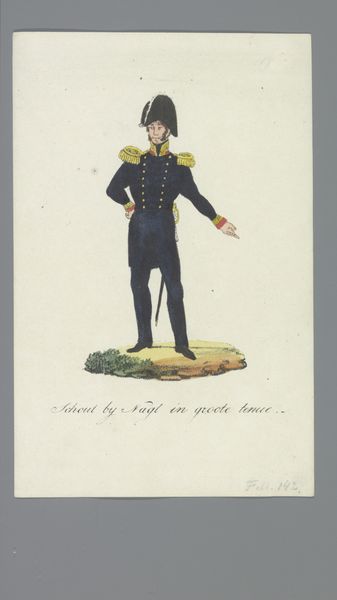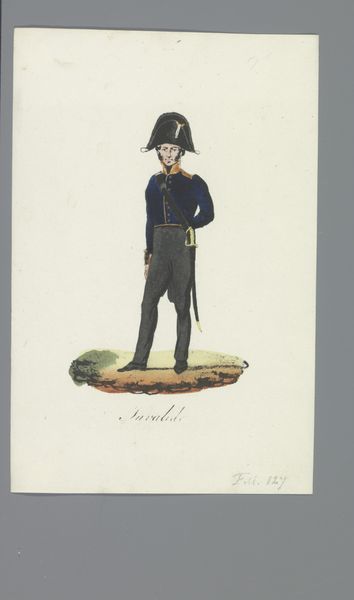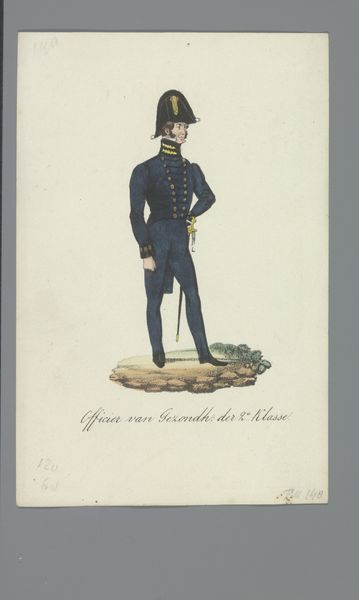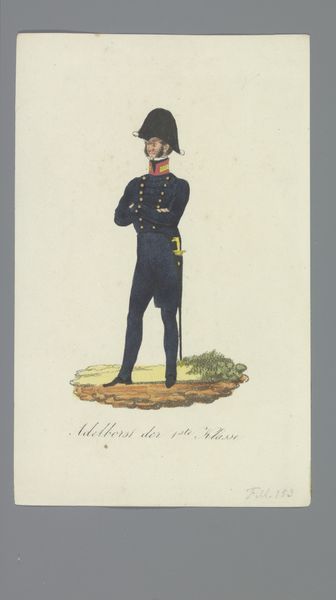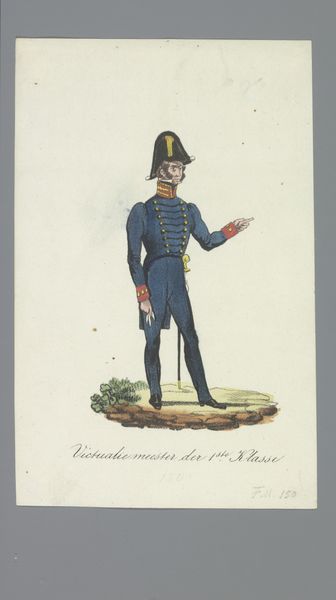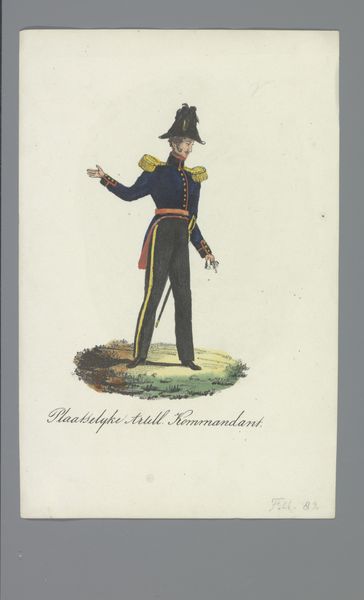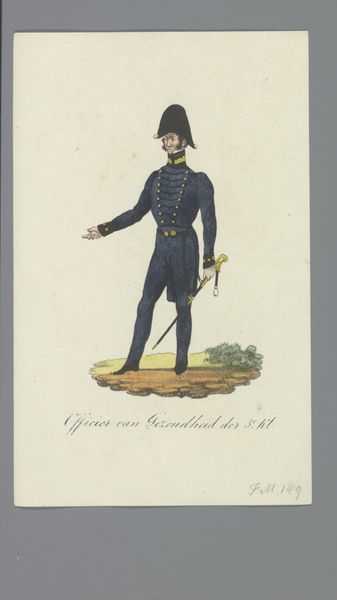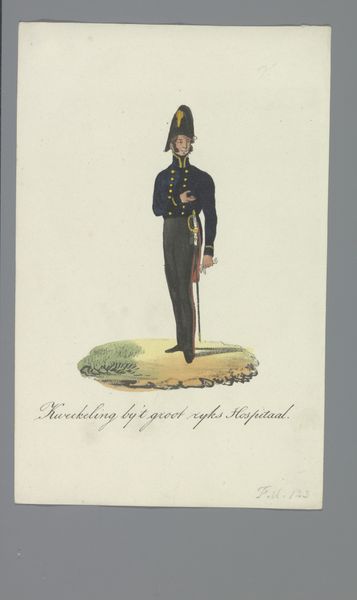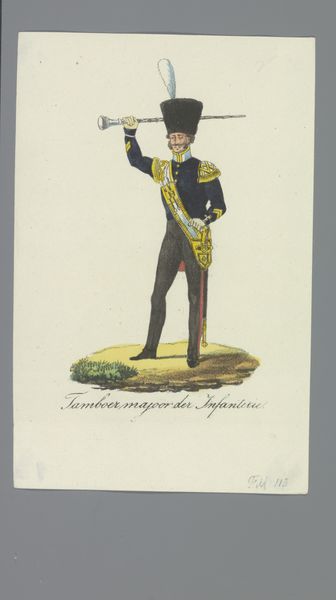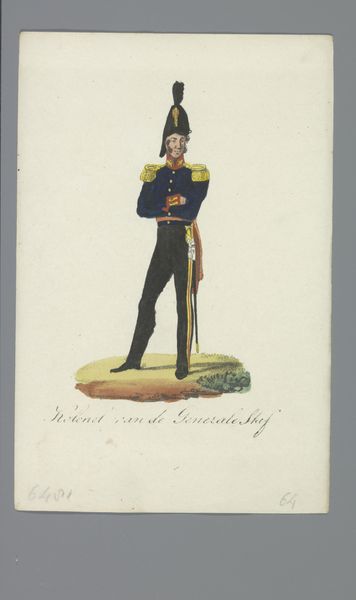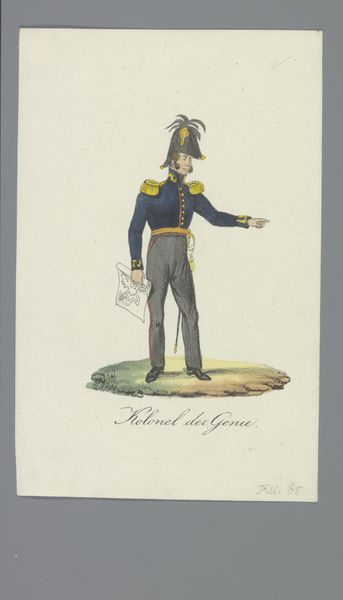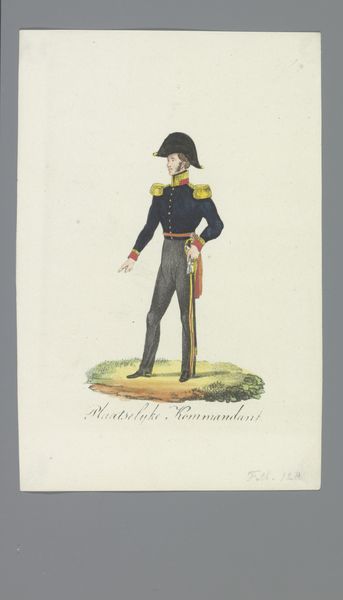
drawing, watercolor
#
portrait
#
drawing
#
watercolor
#
romanticism
#
costume
#
watercolour illustration
#
history-painting
#
academic-art
Dimensions: height 170 mm, width 110 mm
Copyright: Rijks Museum: Open Domain
Curator: This is a watercolor drawing from the Rijksmuseum collection, portraying a naval Captain-Lieutenant in so-called 'small tenue,' or undress uniform. The work by Albertus Verhoesen is estimated to date from between 1835 and 1850. Editor: Right away, I'm struck by how poised he is, almost theatrical! The tiny stage of ground he stands upon and the single gesture out into an implied scene creates this contained but dynamic presence. And the color palette feels almost sepia-toned, evoking a distant, formal past. Curator: Indeed. The attire itself signals an era of strict social codes and military authority. Watercolors such as this served practical purposes, documenting and standardizing military uniforms, but they also presented an ideal of leadership and national pride during the period of nation-building across Europe. Editor: And the 'small tenue' detail—even in undress, there's an adherence to specific presentation. Yet, doesn’t it also whisper something about performativity? He looks so carefully put together, down to the perfectly positioned hand. I find myself wondering what his gaze is fixated on out beyond the edge. Curator: The level of detail is interesting. Notice the carefully rendered gold epaulettes, buttons, and the hint of a sword—each element precisely delineated. The almost photographic specificity aimed to underscore accuracy, but also to ennoble. Editor: Absolutely, the precise detail is a signifier here, no question. It almost feels a bit ironic though—this tension between reality and romanticism. As if trying to freeze a fleeting moment, to impose an eternal order onto something inherently transient. The watercolour’s soft texture, the paper’s quiet surface, they pull against the captain's rigorous appearance. Curator: Romanticism certainly permeates. Think of the emphasis on the individual, the heroic figure. But also consider the practical side. Uniforms had to be identifiable; ranks needed to be clear. These depictions helped shape perceptions of military identity. Editor: So, as both document and, as you point out, shaper of cultural ideals, what kind of conversations do you hope viewers have with it today? Curator: To consider how societies visually represent power, status and to recognize that seemingly neutral depictions are invariably laden with political and social intentions. Editor: For me, it is about seeing that carefully struck pose and asking myself what illusions or dramas *I* may be acting out. The Captain-Lieutenant may stand in “small tenue,” but his presence provokes a grand question of identity for me.
Comments
No comments
Be the first to comment and join the conversation on the ultimate creative platform.
